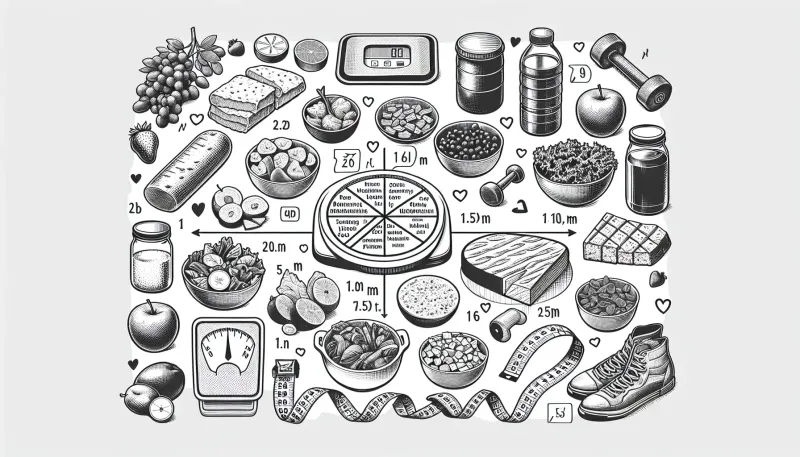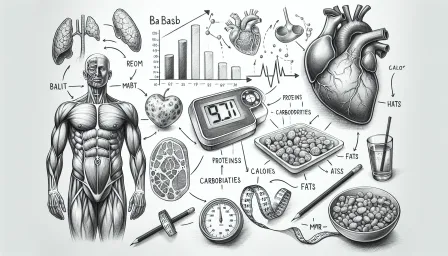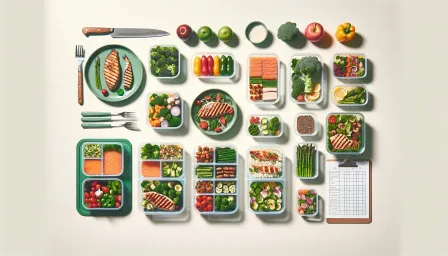Portion Control Diet Plan: Your Ultimate Guide to Effective Weight Loss

Discover how a portion control diet plan can help you achieve your weight loss goals effectively. Learn about the principles, benefits, and tips for success.
Welcome to your ultimate guide to an effective portion control diet plan. Whether you are looking to lose weight, maintain a healthy lifestyle, or improve your eating habits, this comprehensive guide will provide you with valuable insights and practical tips. Let's dive into the world of portion control and discover how it can transform your approach to food.
What is a Portion Control Diet Plan?
A portion control diet plan is a dietary approach that focuses on managing the quantity of food you consume rather than obsessing over specific types of food. The principle is straightforward: by controlling the size of your portions, you can reduce calorie intake, prevent overeating, and maintain a healthy weight. This strategy doesn't require extensive calorie counting or cutting out entire food groups, making it a sustainable option for many individuals.
Benefits of a Portion Control Diet Plan
1. Promotes Weight Loss
One of the primary benefits of a portion control diet plan is its effectiveness in promoting weight loss. By reducing portion sizes, you naturally consume fewer calories, which can lead to a gradual and sustainable weight reduction.
2. Enhances Nutritional Awareness
Practicing portion control encourages you to pay closer attention to what and how much you are eating. This heightened awareness can lead to better food choices and a more balanced diet overall.
3. Improves Digestion
Eating moderate portions can improve digestion by preventing the discomfort and bloating often associated with overeating. Your body can more efficiently process smaller quantities of food.
4. Reduces Risk of Chronic Diseases
Maintaining a healthy weight through portion control can help lower the risk of chronic diseases such as type 2 diabetes, cardiovascular disease, and certain types of cancer.
5. Fosters Mindful Eating
A portion control diet plan encourages mindful eating, where you focus on the sensory experience of eating and recognize hunger and satiety cues. This mindfulness can prevent mindless snacking and emotional eating.
How to Implement a Portion Control Diet Plan
1. Use Smaller Plates and Bowls
Psychologically, smaller plates and bowls can trick your brain into feeling satisfied with smaller portions. It's a simple yet effective way to control portion sizes.
2. Measure Serving Sizes
Invest in measuring cups, spoons, and a kitchen scale to accurately measure your food portions. This practice can help you understand true serving sizes and avoid unintentional overeating.
3. Pre-Portion Your Meals
Prepare and portion your meals in advance. Use containers to store single servings, making it easier to grab a pre-portioned meal on busy days.
4. Be Mindful of Restaurant Portions
Restaurant portions are often larger than necessary. Consider sharing a meal, ordering a half portion, or packing half of the meal to go before you start eating.
5. Fill Up on Vegetables
Incorporate plenty of vegetables into your meals. They are low in calories and high in fiber, making them an excellent choice for volume eating without overeating.
Practical Tips for Success
1. Listen to Your Body
Pay attention to internal hunger and fullness cues. Eat slowly and give your body time to signal when it is satisfied.
2. Avoid Distractions While Eating
Eating in front of the TV or while multitasking can lead to overeating. Focus on your meal to enjoy it fully and recognize when you are full.
3. Stay Hydrated
Sometimes, thirst is confused with hunger. Drink water throughout the day and have a glass before meals to help control appetite.
4. Don't Skip Meals
Skipping meals can lead to extreme hunger and overeating later. Aim to eat balanced meals and snacks throughout the day.
5. Keep a Food Diary
Track your eating habits and portion sizes in a food diary. This can help identify patterns and areas where you can improve.
Common Misconceptions About Portion Control
1. Portion Control Means Starvation
Some people believe that portion control involves eating tiny amounts of food and feeling constantly hungry. On the contrary, it is about eating adequate portions that meet your nutritional needs without overindulging.
2. It's Too Complicated
While portion control may require some initial adjustments, it becomes easier with practice. Simple strategies like using smaller plates or pre-measuring portions can quickly become part of your routine.
3. It Won't Work for Me
Portion control is a flexible approach that can be adapted to individual preferences and lifestyles. It can work for anyone willing to make mindful choices about their food intake.
Conclusion
A portion control diet plan offers an effective and sustainable solution for weight loss and long-term health. By understanding and managing your portion sizes, you can enjoy a variety of foods while maintaining a healthy weight. Remember to focus on balanced, nutritious meals and listen to your body's cues. Implement the tips and strategies in this guide, and you'll be well on your way to achieving your health and weight loss goals.
Start your journey today with these practical steps and experience the benefits of portion control. Your body and mind will thank you!



























